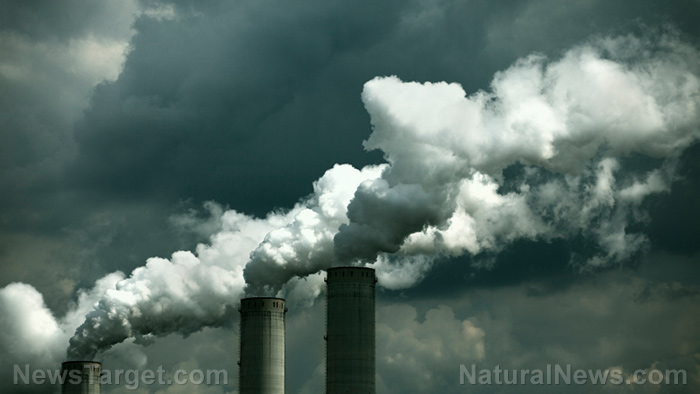Harmful trace metal emissions from human activity now exceed all natural sources combined, contributing to air pollution, health dangers
03/05/2019 / By Rita Winters

Adding to a cocktail of nitrogen, sulfur oxides, and carbon monoxide that suffocates us daily, experts have discovered a spike in levels in some trace elements, potentially causing more harm to everyone’s health. A study conducted by researchers from Duke University study found that the amount of vanadium, a harmful trace metal, in the earth’s atmosphere had increased since the beginning of the 21st century. This upswing in levels is a direct result of the heavy use of unconventional heavy petroleum fuels, according to researchers. The study was published in the Proceedings of the National Academy of Sciences.
William H. Schlesinger, professor emeritus of biogeochemistry at Duke and the lead researcher of the study, states that the petroleum industry is what is causing the increase in levels of vanadium in our atmosphere. The study is the first paper to account for the quantity of both natural and human sources of vanadium, as well as its input in atmospheric pollution. While vanadium occurs naturally in the Earth’s crust and in sea plants, man-made vanadium is causing an imbalance in atmospheric levels and may have serious health effects on humans.
Together with Schlesinger, professor of earth sciences Emily M. Klein and professor of geochemistry and water quality Avner Vengosh deduce that the current levels of vanadium may exacerbate health conditions such as asthma and chronic obstructive pulmonary disease (COPD), and may lead to other sorts of respiratory disorders. According to the researchers, the study aims to address the lack of attention on the side effects of oil and coke refineries, such as the one in the southeast side of Chicago.
The lowdown on vanadium
Vanadium (V) is a silvery gray, ductile, and malleable metal, which was discovered in 1801 by Andres Manuel del Rio, a Mexican chemist. It is rarely found in nature, mostly during volcanic eruptions and when rocks weather. About 85 percent of the artificially produced vanadium is used as a steel additive (ferrovanadium). While vanadium compounds are not necessarily serious health hazards, occupational exposure to vanadium peroxide dust and other vanadium aerosols may cause severe eye, nose, and throat irritation.
Vanadium exposure usually occurs through the food we eat. These include buckwheat, soya beans, olive oil, sunflower oil, apples, and eggs. Some suggest that vanadium is an essential component of hormonal and metabolic functions, but its purpose has not yet been truly identified. In line with this, excessive exposure to vanadium through ingestion or through aerosols such as those currently polluting our atmosphere may take its toll on human health. Side effects of vanadium may include cardiovascular diseases, inflammation of the gut, damage to the nervous system, internal organ bleeding, skin rashes, and other negative changes. (Related: Experts accuse Russia of covering up a nuclear fuel plant leak, claiming it caused the mysterious radioactive cloud across Europe sighted in September.)
Like most toxic chemicals, vanadium may cause mortality, especially after prolonged exposure to extreme levels. This study, like many other studies, call for an assessment of oil and petroleum refineries which have been allowed to operate for many decades, while people are oblivious of its detriments on health and the environment. Patronage of diesel cars and jet plane fuel only encourages these oil firms to go ahead with their toxic methods, while nature and human lives pay the price.
Sources include:
Tagged Under: asthma, COPD, environment, fuel, petroleum, respiratory diseases, toxic chemicals, trace element, vanadium



















